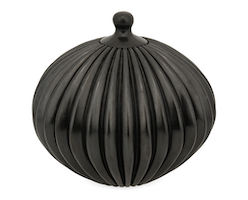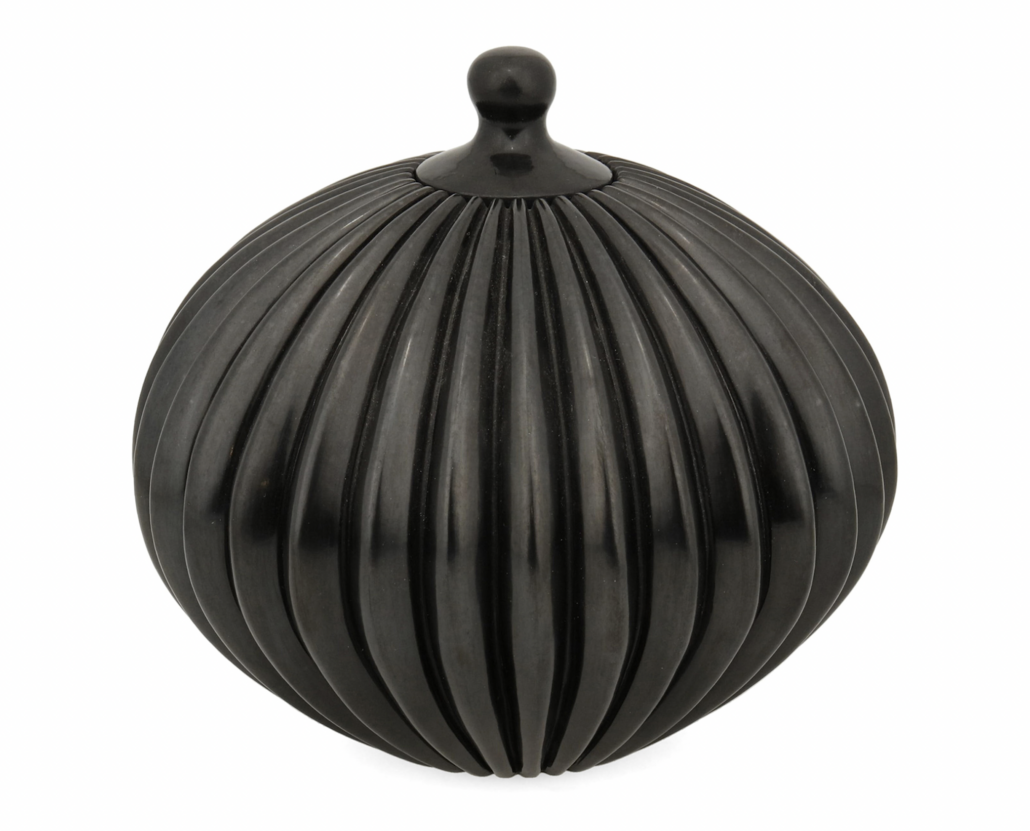
LOS ANGELES — It was the Wild West [Coast] at John Moran Auctioneers on May 24 for its Art of the American West sale. The showroom was filled with the largest, most stunning collection of Native American textiles, blankets, weavings and rugs.
One of the highlights was a Chimayo/Saltillo Revival serape textile from late 19th or early 20th century. This textile was finely woven with a sublime color palette of even tones including green, brown, rust and purple, and displayed classic design elements such as the important central motif of a serrated concentric diamond, so defining of Saltillo style. It was made with a Vallero star in the center of the diamond, an intensely decorated inner field, and distinctive serrated borders and banding. The use of the Vallero star suggests the coming transition between the earlier Rio Grande style and the 20th-century Chimayo style. Starting with a modest estimate of $3,000-$4,000, this piece reached the top spot in the auction at an impressive $10,625.
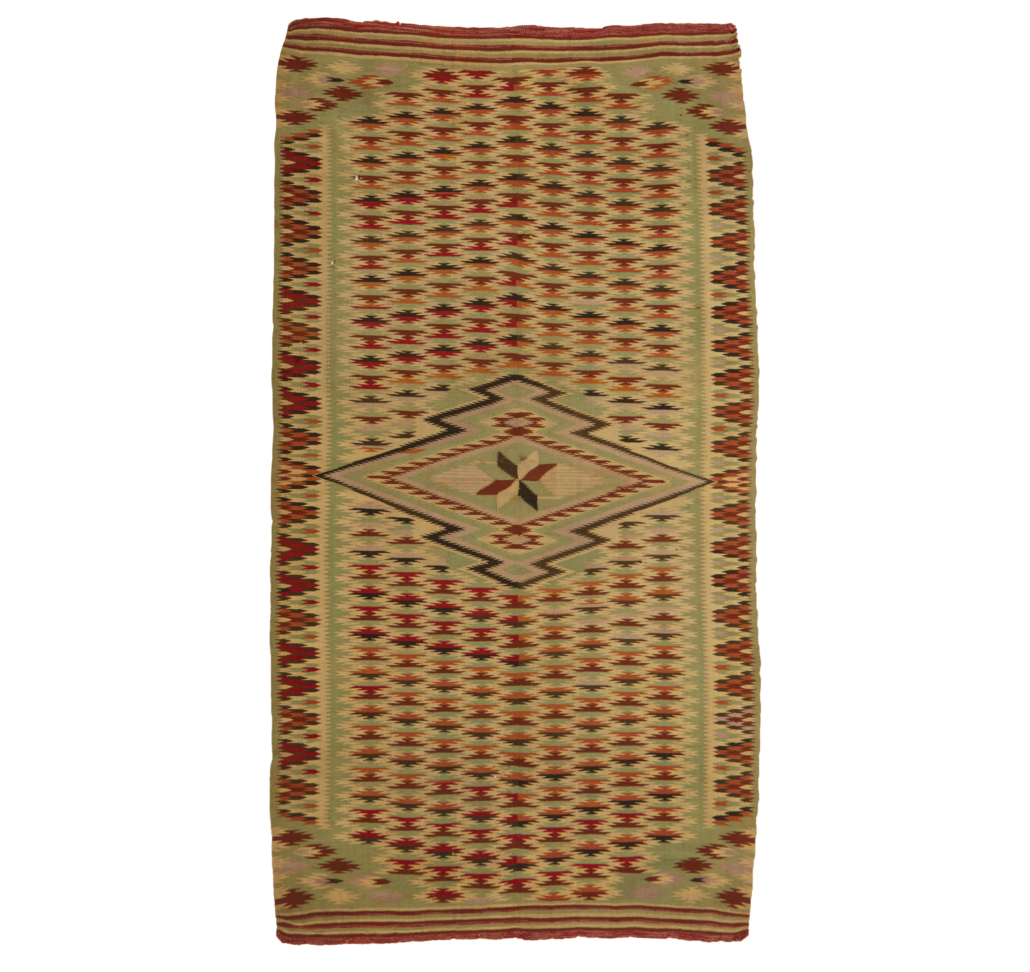
Besides textiles, this sale featured numerous lots of masterful Puebloan pottery from groups such as San Ildefonso, Zia, Acoma, Hopi, Santa Domingo and Navajo as well as a variety of redware and blackware from Santa Clara. A Nancy Youngblood blackware lidded melon form vessel from 1996 achieved $5,525 against an estimate of $3,000-$5,000.
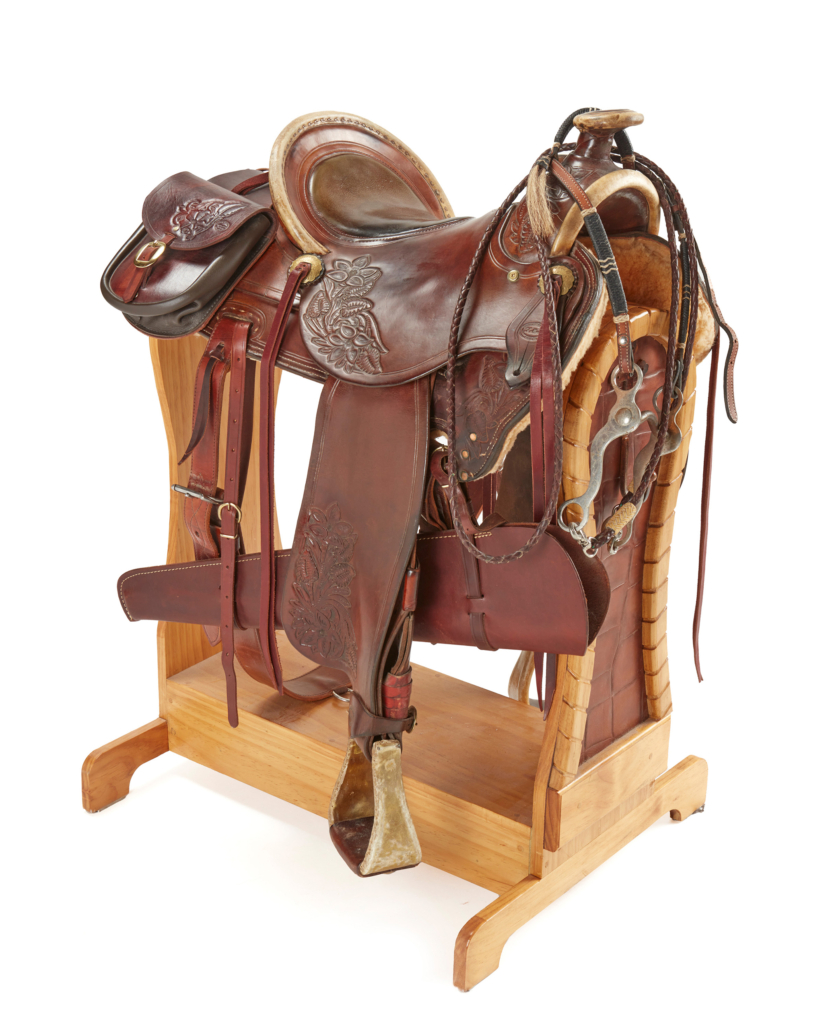
Cowboys and cowgirls were tempted with a couple of pairs of well-crafted leather chaps, complete with rope and fringe embellishments. For their horses, there was a hand-tooled saddle and bridle by D. Hulbert from the High Country Cowboy Company in Arboles, Colorado. The piece consisted of a leather saddle and fenders with leather cinch, latigos, open stirrups, detachable tooled saddle bags and a detachable rifle carrier with a leather headstall. The bidder with the quickest draw galloped away with this custom cowboy tack after pledging $4,375.
Among the several collections was a beautiful array of basketry. There were selections of Pima and Apache baskets, Navajo wedding baskets and Hopi wicker plaques. Highlights in this category included a polychrome Yokuts basket and a polychrome Mono Ant Trails lidded basket by Rose Baga, both from the James M. Cole collection.
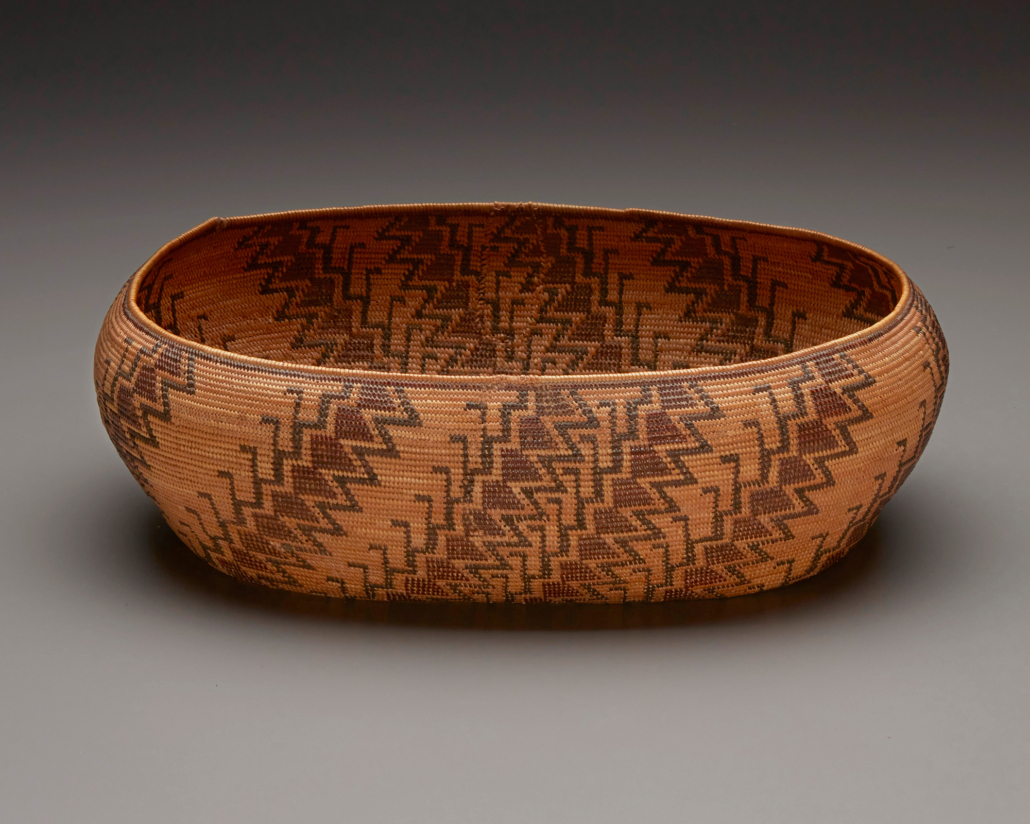
The polychrome Yokuts basket was an attractive boat-shaped oval polychrome basket with 12 rows of either centipedes or quail plumes and ant trails flanking a rattlesnake scale pattern. In Yokuts mythology, the imagery of the quail and ant serves as a subtle warning and remind the misbehaving, deadly rattlesnake to stay in line and behave. The lowland marches of the Sierra Nevada foothills and San Joaquin Valley produced the materials used in the construction of the coveted baskets, including broken fern, sedge and redbud. This piece was estimated at $800-$1,200 but finished at $4,063.

The other basket in the sale that performed notably was a polychrome Mono Ant Trails lidded basket by celebrated weaver Rosa Baga of the Monache tribe from Central California. Expertly woven with a stepped four-part design of so-called “ant trails” on the globular sides and lid, this superb basket also illustrates a similar story of imagery from the natural world. Although the techniques and design work share common features with Yokuts baskets, each maker may have her own interpretation of the shared designs. Estimated at $500-$700, the Rose Baga basket brought $2,500.
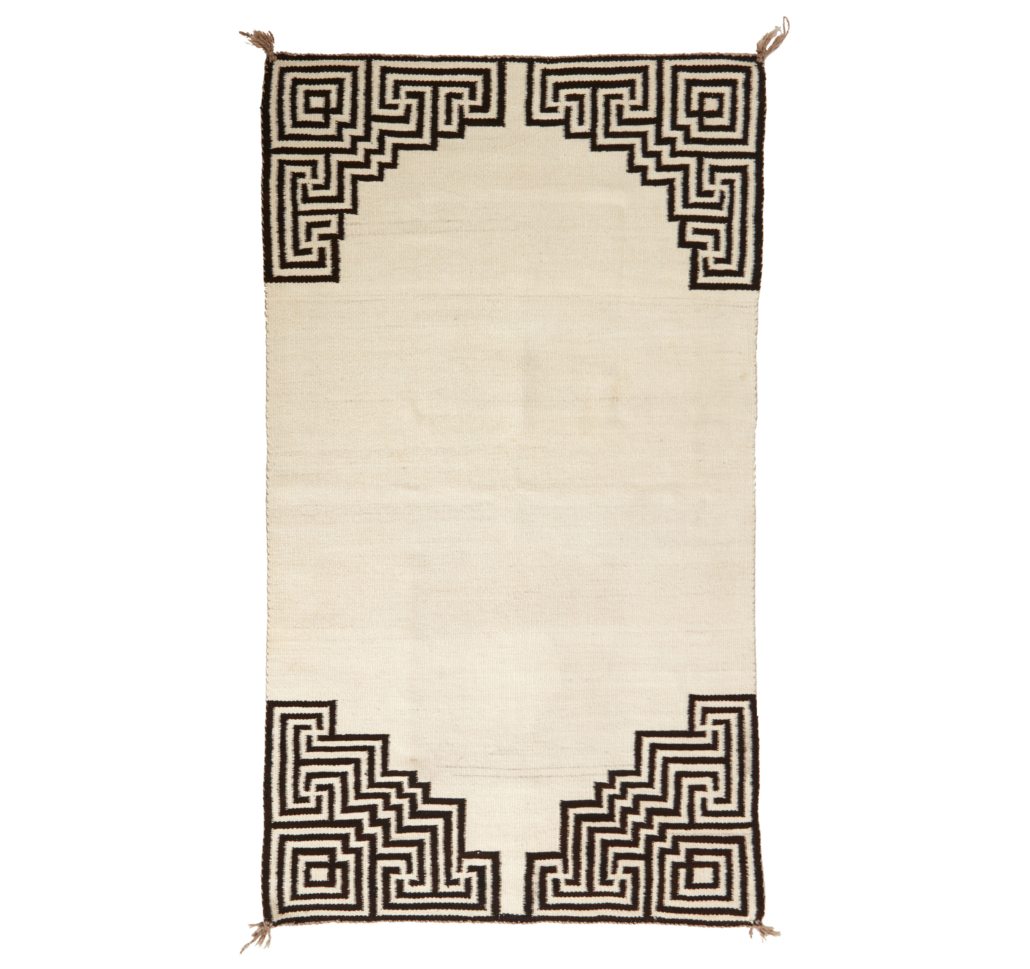
More than 150 lots of late 19th- and 20th-century textiles featured in the sale, primarily made by indigenous people throughout the Southwest and Northern Mexico — most being of Navajo origin. A Navajo double saddle blanket from the early 20th century, woven in dark brown-black and cream wool, with a ghost center and Anasazi-style motif corners, commanded bidders’ attention. This perfect, pristine example was originally estimated at $1,000-$1,500, but ultimately earned $4,875.
[av_button label=’Click to view the auction catalog complete with prices realized’ icon_select=’no’ icon=’ue800′ font=’entypo-fontello’ link=’manually,https://www.liveauctioneers.com/catalog/247417_art-of-the-american-west/?keyword=&page=1′ link_target=’_blank’ size=’small’ position=’center’ label_display=” title_attr=” color_options=” color=’theme-color’ custom_bg=’#444444′ custom_font=’#ffffff’ btn_color_bg=’theme-color’ btn_custom_bg=’#444444′ btn_color_bg_hover=’theme-color-highlight’ btn_custom_bg_hover=’#444444′ btn_color_font=’theme-color’ btn_custom_font=’#ffffff’ id=” custom_class=” av_uid=’av-8uburhp’ admin_preview_bg=”]
View top auction results on LiveAuctioneers here: https://www.liveauctioneers.com/pages/recent-auction-sales/


